A UNESCO World Heritage Site that has inspired generations of poets, artists, painters, and writers.
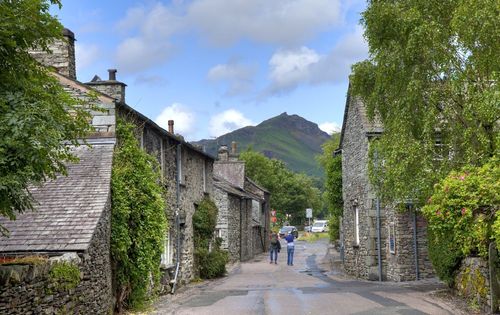
Lake Buttermere in the Lake District
- © Pajor Pawel / Shutterstock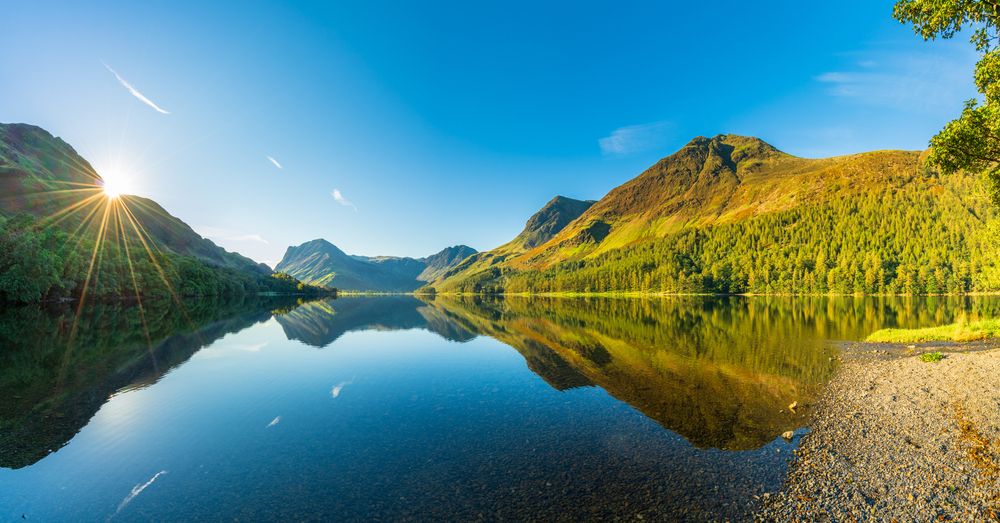
A UNESCO World Heritage Site that has inspired generations of poets, artists, painters, and writers.
Located in the historic county of Cumbria at England’s northwestern most point is one of the world’s most sublime wilds, a UNESCO World Heritage Site that has inspired generations of poets, artists, painters, and writers. The Lake District, home to England’s tallest summits and its deepest lakes, is the most visited national park in the country and brings over 15million tourists to this remote corner every year seeking to reconnect with the wind and water, Nature at its finest. Containing some of the finest walks in the entirety of the UK that bisect monumental mountains, serene lakes, and dramatic waterfalls, meandering from Neolithic ruins to ancient villages, the appeal of the Lake District is self-evident; “the loveliest spot that Man hath ever found.”
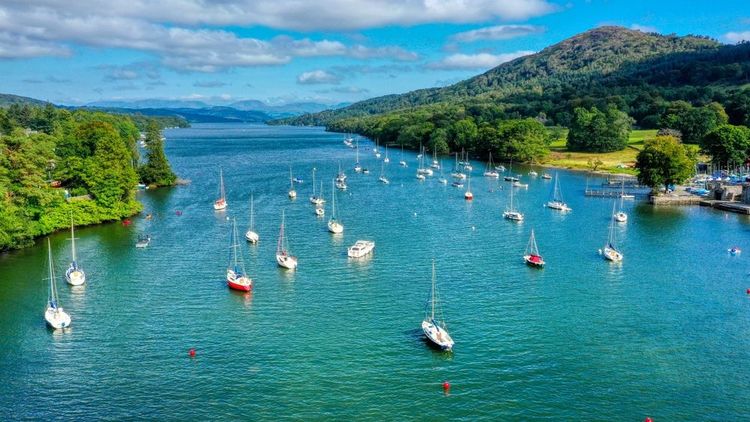
Lake Windermere, the largest lake in England, is found in the Lake District.
- © RangsDigitalHD / ShutterstockWhen visiting the Lake District, it makes sense for your first call of order to be that which gives the national parks its name, its lake. All-in-all there are sixteen ‘official’ lakes in the Lake District, supplemented by countless tarns (the Cumbrian word for a small lake on a mountain) and man-made reservoirs. The largest of these lakes is Lake Windermere which spans 18km (11 mi) in length and is perhaps the most famous too, offering a myriad of things to do from adrenaline-pumping water sports to soul-soothing heritage cruises. Ullswater, ridged by the Helvellyn mountains, High Street fells, and Red Screes, is widely considered the most beautiful and offers some of the region’s best walks and its own heritage cruise service too, while Derwentwater is noted for the constellation of island’s that jewel its pristine surface and its position on the edge of the market town of Keswick.
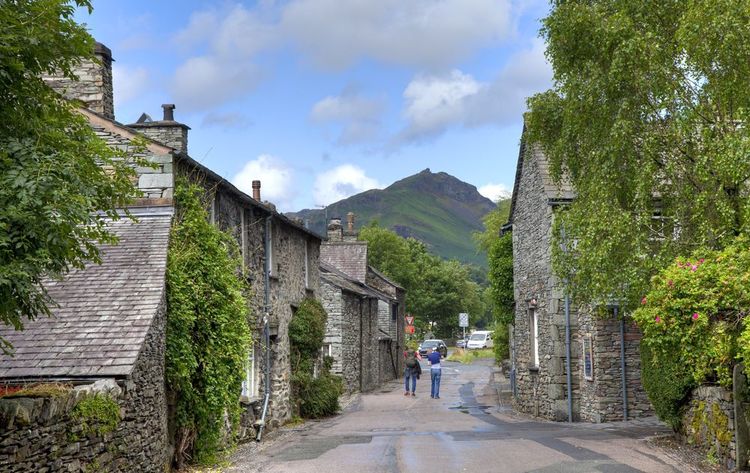
Grasmere, the former home of famous Lakelands poet William Wordsworth.
- © Andrew Roland / ShutterstockSpeaking of Keswick, the Lake District isn’t simply untamed wild. Rather, it is brimming with human life, if only human life hung in a lulled, somnolent state that harkens to an Elysian past. Keswick is notable as one of the oldest market towns in Europe, first chartered in 1276 by King Edward II and in rolling operation ever since. 19th-century art critic John Ruskin once described it as “almost too beautiful to live in.” Ambleside is another ancient market town at the mouth of famous Kirkstone Pass, since transformed into one of the most vibrant towns in the Lakes with its small yet thriving student population. Grasmere, meanwhile, is an idyllic little village on the banks of the River Rothay that became a poet’s sanctuary in the 19th century for its paradisal quietude, most notably serving as muse to William Wordsworth, a founding figure of the Romantic movement. Other villages certainly warrant mention - Rydal is a tiny hamlet that has similar past as a poet’s retreat, Cartmel is the Norman monastery town that put sticky toffee pudding on the culinary map, and Kendal is its de facto capital and a national cultural centre - however there is never a wrong choice when choosing which to visit in the Lakes.
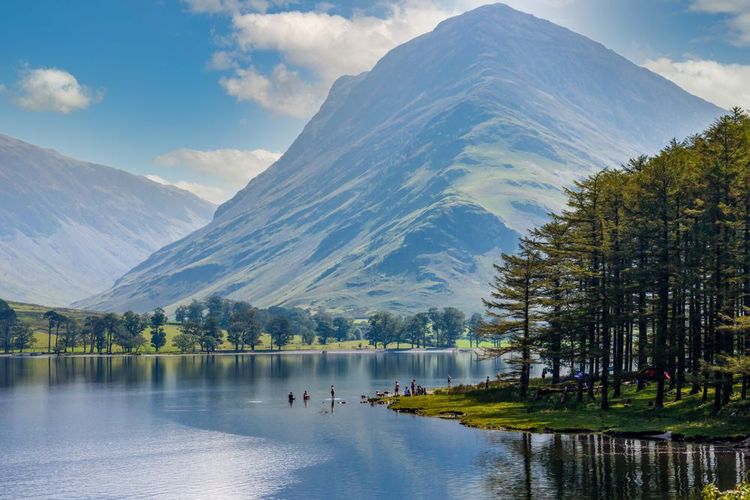
Fleetwith Pike looming high above Lake Buttermere
- © Richard Whitcombe / ShutterstockAs well as its deepest lakes, the Lake District is home to England’s tallest mountains. In fact, 23 of the country’s 25 tallest mountains are found in Lakeland, including its entire top ten and all seven peaks that exceed 3000ft (900m). The region’s global status as a mountain walker’s paradise, aided by luminary figures such as Alfred Wainwright, is then unsurprising. Most legendary of these mountains is Scafell Pike, the 3209ft (978m) tall colossus notable as England’s tallest mountain. Haystacks, with its undulating ascent decorated with mind-boggling rock formations and crystalline tarns, is famous as the favourite of Wainwright, while Helvellyn, Skiddaw, and Blencathra are other handsome summits with a nationwide reputation.

Castlerigg Stone Circle, one of the Lake District’s most fascinating historic sites.
- © Richard Bowden / ShutterstockIf you’re searching for other things to do during your visit to the Lake District, the park is filled with idiosyncratic activities and attractions completely unique to the Lakelands landscape. High on Honister Pass is Honister Slate Mine, a working slate mine renovated in the 1990s as a mine-cum-adventure park, featuring the UK’s first Alpine via ferrata, mine tours, and an ‘Infinity Bridge’ 1000ft (305m) in the sky. The Castlerigg Stone Circle, found just outside Keswick on a scenic moorland plateau surrounded by looming fells, is a Neolithic wonder considered one of the country’s oldest and best-preserved ancient structures, and woven throughout the District’s natural architecture are small homages to Beatrix Potter, the whimsical children’s author who devoted her life to preserving the region’s natural beauty. Visit her gorgeous former farmhouse home in Near Sawrey, the Beatrix Potter Gallery in Hawkshead, and the World of Beatrix Potter attraction at Bowness-on-Windermere to fully immerse yourself in her enchanted otherland.
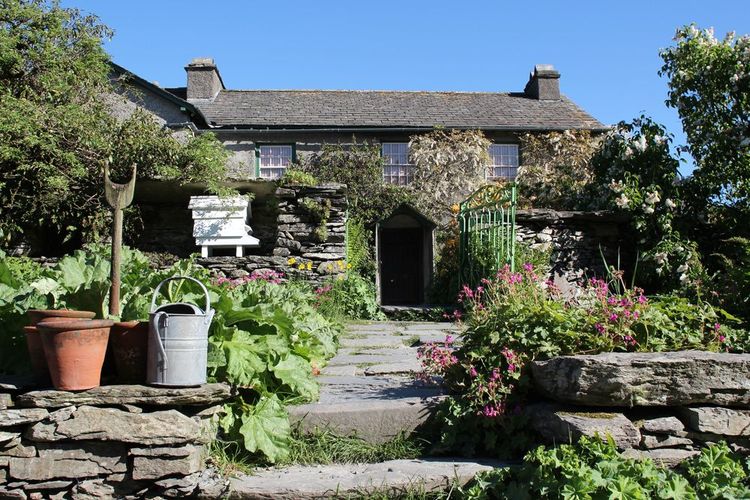
The former home of Beatrix Potter, one of the Lake District’s most beloved literary exports.
- © A D Harvey / Shutterstock
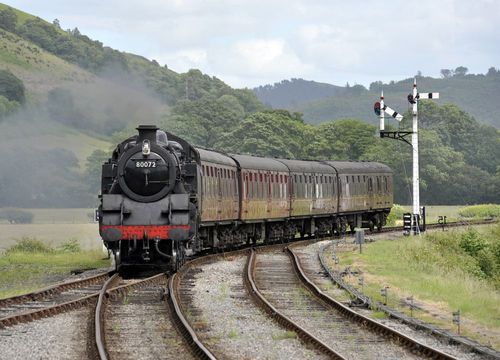
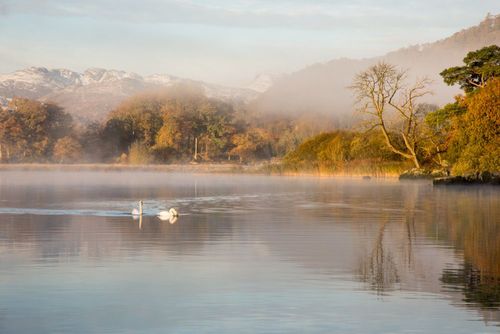
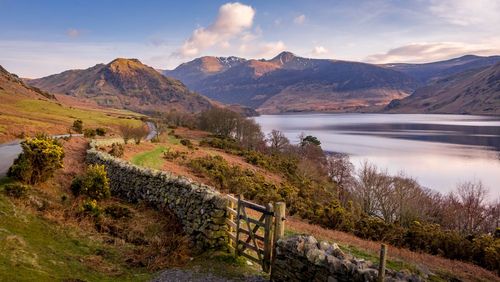
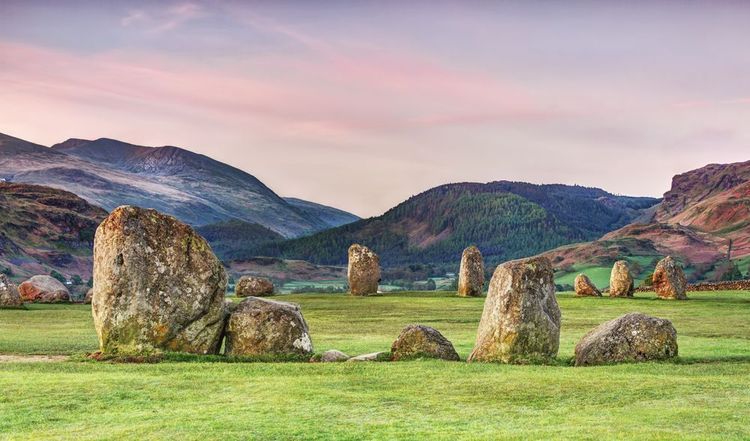 1
1
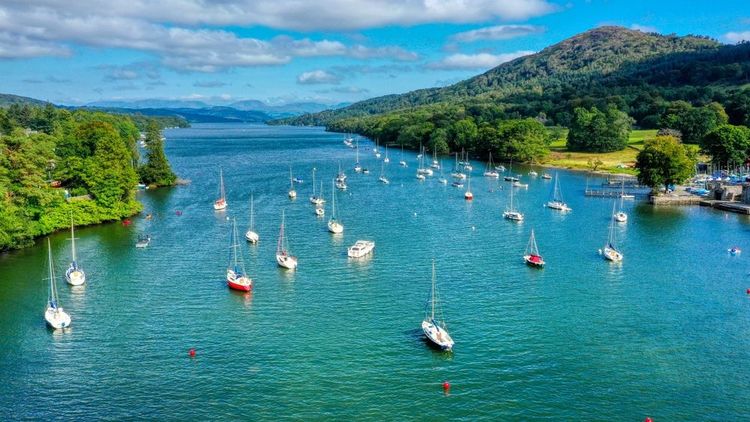 2
2
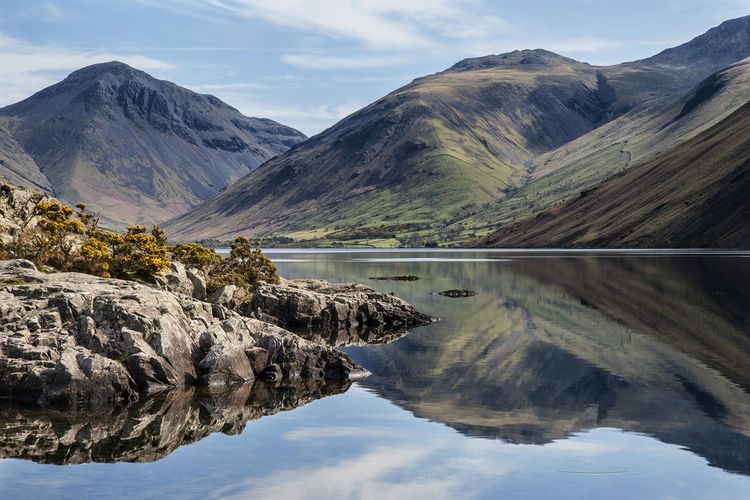 3
3
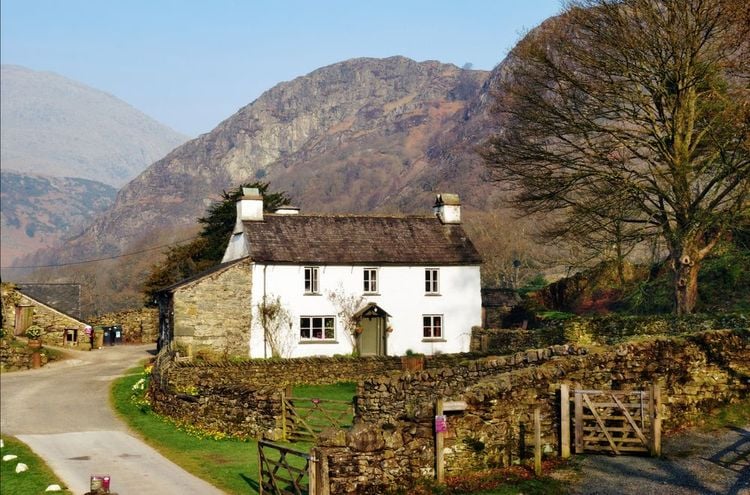 4
4
By train
The Lake District’s three main train stations are Oxenholme, Windermere, and Kendal. Oxenholme receives national services from London and Glasgow, while Windermere and Kendal receive trains from Manchester.
By car
National Express runs several coaches to towns around the Lake District. Visit their website for more information.
By car
The M6 runs to the east of the Lake District National Park. Take Junction 36 and then A590 for the southern end of the Lake District. Take Junction 40 and the A66 or A592 for the northern end of the Lake District.
By plane
For international travellers, the easiest way to get to the Lake District is probably to fly to Manchester Airport and then take a connecting train into the Lakes.
Founded with the aim of providing low-cost and sociable accommodation to young people seeking to explore more of the country, the Youth Hostels Association of England and Wales (YHA) opened its first location in North Wales in December 1930, its hostels quickly becoming a national phenomenon in the UK. They became particularly popular among hikers looking for cheap overnight accommodation to facilitate their explorations, and it is perhaps no surprise then that YHA’s establishments have become staples of the Lake District’s touristic culture, with 19 locations to be found within the UNESCO-designated national park. Each have their own advantages, offering access to new and exciting parts of Lakeland, so we have compiled for you a list of the ten best and what they have to offer to help you plan your next Lake District odyssey.
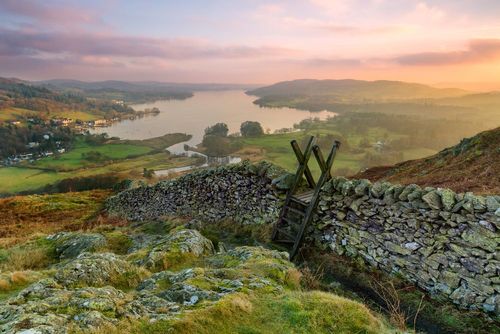
The Lake District is gorgeous all year round, but if you'd prefer to have the weather on your side, you should plan your trip between May and September. July and August are the busiest times of year, so if you want to avoid large crowds it is best to come outside of peak season, in late spring or late summer.
Cumbrian weather can be temperamental at the best of times, so it’s always best to prepare for colder, wetter weather and pack a waterproof coat and some layers. If you’re planning on doing any hiking, make sure you bring the hiking essentials: proper boots, a hiking backpack, weather-appropriate clothing, and plenty of food and water. Otherwise, just bring anything you would bring on a typical trip, and remember essentials like plug adapters and sterling currency if you’re coming from outside the UK!
The Lake District is relatively well-connected by bus: Stagecoach 555 connects Kendal, Windermere, Ambleside, Grasmere, and Keswick; Stagecoach 599 connects Kendal, Windermere, Bowness, Ambleside, and Grasmere; Stagecoach 508 connects Aira Force, Glenridding, and Patterdale; and Stagecoach 6 connects Ulverstone, Newby Bridge, Bowness-on-Windermere, and Windermere. Seasonal shuttle coaches also operate in the summer, while the Lake District’s ferries can also provide a convenient way of getting between towns. Check the Lake District official website for further travel information.
The Lake District doesn’t have a massive culinary heritage, however there are a handful of dishes and treats unique to the region that are worth seeking out. Sticky toffee pudding, a sponge cake dessert soaked in decadent toffee sauce, is one of Britain’s most popular desserts and was popularised in Lakeland; Cumberland sausage is a national favourite with protected PGI status and consists of well-spiced pork fashioned into long, coiled sausage shapes; Grasmere gingerbread is a unique sweet-spicy biscuit-cake hybrid with Victorian roots; and Kendal mint cake is a popular hikers’ snack made primarily from sugar and peppermint. For a culinary baptism into the best that the Lake District has to offer, we recommend:
For something to drink, we recommend The Lakes Distillery, a holistic whiskey maker that makes some of the nation’s most coveted malt and blended whiskeys, as well as gins, vodkas, and flavoured liqueurs.
Some of the above-mentioned flavours of the Lake District can make cherished souvenirs: a batch of the world’s best gingerbread from the Grasmere Gingerbread Shop, a mouthwatering supply of traditional sticky toffee pudding from Cartmel Village Shop, or some masterfully blended, sophisticated alcohols from The Lakes Distillery. For other unique souvenirs, head to Honister to buy a small knick-knack made from the region’s signature green slate which has been used to adorn buildings as prestigious as Buckingham Palace and Scotland Yard; or to the World of Beatrix Potter for a specialty Beatrix Potter Royal Mint Coin decorated with her iconic characters.
For those planning on doing plenty of hiking in the Lake District, keep in mind that parts of the Lake District are extremely isolated and can be difficult to traverse. As a result, Google Maps or other online map services are not always reliable for providing guidance, especially for hikes a little off the beaten path. We recommend familiarising yourself with reading Ordnance Maps which will give you a much more intricate and reliable perspective on your surroundings. You can download the maps onto your chosen digital device or purchase them in outdoor shops and bookstores around the Lake District.
explore Try out our comparators
It is Easy to travel



